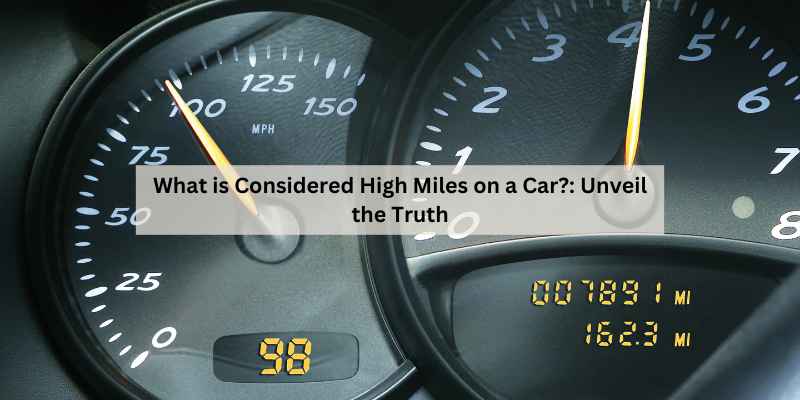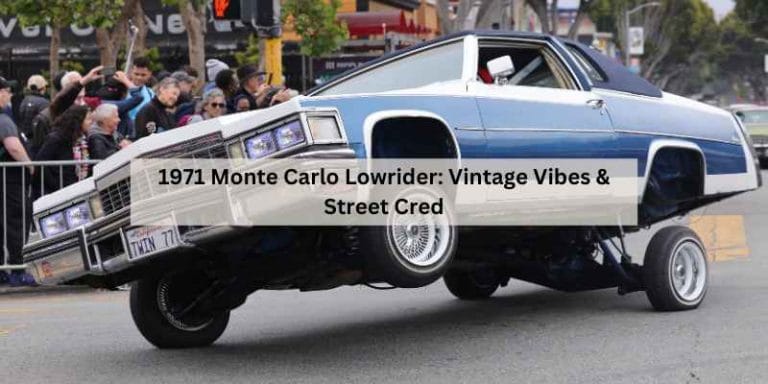What is Considered High Miles on a Car?: Unveil the Truth
High miles on a car typically refer to a mileage of 100,000 miles or more. Cars with this mileage may face more maintenance issues and reduced resale value.
High mileage vehicles can be a mixed bag for buyers and sellers alike. While some cars can run efficiently beyond 100,000 miles, others may begin to show signs of wear and tear. Factors such as maintenance history, driving conditions, and model reputation significantly influence a car’s longevity.
Many buyers shy away from high-mileage cars due to concerns about reliability and repair costs. Understanding what constitutes high miles can help you make informed decisions, whether you’re purchasing a used vehicle or selling one. Knowing the implications of high mileage can save you time and money in the long run.
High Mileage Myths Vs. Facts
Many people believe that high mileage means a car is near the end. This is not always true. Cars can last for many years with proper care. Regular maintenance can help extend a vehicle’s life.
Some think that cars over 100,000 miles are unreliable. In reality, many vehicles run well beyond this point. Quality parts and good driving habits play a big role in a car’s longevity.
Another common myth is that high mileage cars are not worth buying. Many well-maintained high mileage cars can be a great deal. Buyers should always check the vehicle’s service history.
Decoding The Mileage
High mileage on a car often raises concerns. Average annual mileage is about 12,000 to 15,000 miles. Cars with more than 100,000 miles can be considered high mileage. However, some vehicles can handle more miles.
Here are some mileage benchmarks for used cars:
| Age of Car | Average Mileage | High Mileage |
|---|---|---|
| 1 Year | 12,000 – 15,000 | 15,000+ |
| 3 Years | 36,000 – 45,000 | 50,000+ |
| 5 Years | 60,000 – 75,000 | 80,000+ |
| 10 Years | 120,000 – 150,000 | 150,000+ |
Cars with high mileage might need more maintenance. Check the car’s service history before buying. A well-maintained high-mileage car can still be a good choice.
The Lifespan Of Modern Vehicles
The lifespan of modern vehicles has increased due to technology. Many cars now last over 200,000 miles. Regular maintenance helps achieve this goal.
Advancements in auto technology have improved engine efficiency and durability. Features like GPS tracking and smart sensors enhance performance and safety. These innovations contribute to a vehicle’s overall longevity.
| Mileage Range | Vehicle Condition |
|---|---|
| 0 – 50,000 miles | New or Like New |
| 50,000 – 100,000 miles | Good Condition |
| 100,000 – 150,000 miles | Average Condition |
| 150,000 – 200,000 miles | Fair Condition |
| 200,000+ miles | High Miles, Watch for Issues |
Factors Influencing Vehicle Wear And Tear
Several factors affect a car’s wear and tear. Maintenance practices play a crucial role. Regular oil changes and timely repairs can extend a vehicle’s life.
Driving habits also impact longevity. Gentle acceleration and braking reduce stress on the engine. Long trips can be better than short ones for some cars.
Environmental conditions are important too. Extreme temperatures can damage a car over time. Salt from roads in winter can cause rusting.
Assessing A High-mileage Car
Check the car’s service history. A well-documented record shows regular maintenance. Oil changes, brake checks, and tire rotations are essential. Look for any recalls that may have been addressed.
Inspect the exterior for rust or dents. A clean body often indicates good care. Check the interior for wear and tear. A well-kept interior shows pride in ownership.
Examine the tires for even wear. Uneven tires may suggest alignment issues. Test the brakes for responsiveness. Strong brakes indicate a careful driver.
| Inspection Item | What to Look For |
|---|---|
| Service Records | Regular maintenance and repairs documented |
| Exterior Condition | No rust or significant dents |
| Interior Condition | Minimal wear and clean surfaces |
| Tire Condition | Even wear and proper inflation |
| Brake Performance | Responsive and effective braking |
The Impact Of High Mileage On Value
High mileage on a car can greatly affect its value. Cars with over 100,000 miles often see a drop in price. The depreciation curve shows how value decreases with more miles. Early years may see quick value loss. After that, the drop slows down.
Buyers often hesitate with high-mileage vehicles. They worry about repair costs and reliability. A well-maintained car can still have a good resale value. Service records help prove the car’s condition. Some buyers may even prefer high mileage for lower prices.
It’s essential to assess the overall condition of the car. Factors like maintenance history and accident reports matter too. High mileage doesn’t always mean bad quality. A reliable, high-mileage car can still be a great deal.
Making The High-mileage Decision
Buying a car with high mileage can be a smart choice. Many cars run well past 100,000 miles. Check the maintenance history before buying. A well-maintained car can last longer. Look for cars with good reviews from other owners.
Selling a high-mileage car may be tricky. Cars over 150,000 miles can lose value. Timing is important. Consider selling if repairs cost more than the car’s value. A well-timed sale can maximize profit.
Longevity Tips For Your High-mileage Car
Regular routine maintenance is key for high-mileage cars. Change the oil every 3,000 to 5,000 miles. Replace filters and check fluid levels frequently. Inspect brakes and tires for wear. Keep the battery in good condition. A clean engine runs better and lasts longer.
Consider upgrading certain parts. Better spark plugs can improve performance. A new exhaust system might boost fuel efficiency. Installing a cold air intake can enhance engine power. These upgrades help maintain your car’s longevity.
The Future Of High-mileage Cars
The automotive industry sees evolving standards for high-mileage cars. Many drivers now expect better durability and performance. Cars are designed to last longer than before. High mileage no longer means poor quality. Manufacturers focus on innovative materials and engineering. These advancements help cars withstand the test of time. Regular maintenance remains key to longevity. Technology plays a significant role in this evolution. Smart features can alert drivers to potential issues. This keeps cars running smoothly even at high miles.
With innovation in durability, the future looks bright. More consumers trust high-mileage vehicles. They see value in long-lasting cars. Fuel efficiency improves alongside durability. This shift benefits both drivers and the environment. A high-mileage car can be a smart investment. More options in this market lead to better choices for everyone.
Frequently Asked Questions
What Is Considered High Mileage For A Car?
High mileage is typically defined as over 100,000 miles. However, this can vary based on the car’s make and model. A well-maintained vehicle may still perform well even with higher mileage. Always consider the car’s service history and overall condition.
How Does Mileage Affect A Car’s Value?
Higher mileage generally decreases a car’s resale value. Buyers often perceive high-mileage cars as more likely to need repairs. However, a well-maintained high-mileage car can still hold value. Maintenance records can significantly influence a car’s worth regardless of mileage.
Is 150,000 Miles Too Much For A Used Car?
While 150,000 miles is considered high, it’s not necessarily too much. Many cars can last well over 200,000 miles with proper care. It’s important to check the vehicle’s maintenance history and condition. A reliable used car at this mileage can still be a good investment.
How Can I Check A Car’s Mileage History?
You can check a car’s mileage history through a vehicle history report. Services like Carfax or AutoCheck provide detailed mileage records. These reports can reveal discrepancies and potential odometer rollbacks. Always obtain a report before purchasing a used car to ensure transparency.
Conclusion
Understanding what constitutes high mileage on a car can help you make informed decisions. Generally, vehicles with over 100,000 miles may face increased maintenance needs. Always consider factors like service history and overall condition. This knowledge empowers you to choose wisely and invest in a reliable vehicle for your needs.







